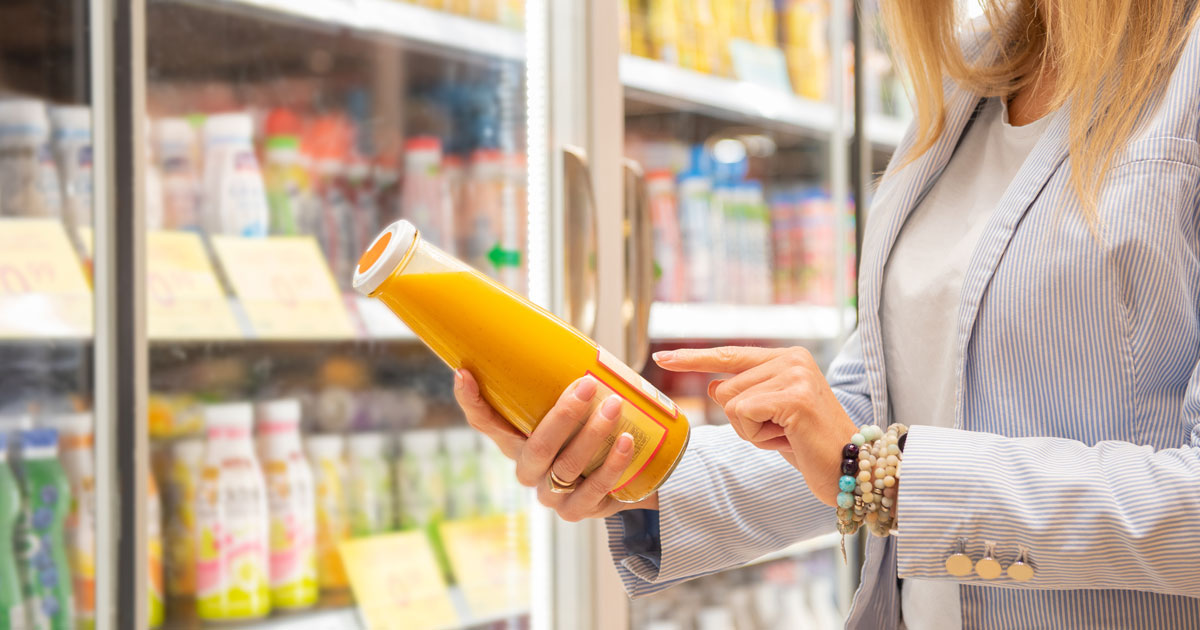
The clean label movement has evolved from a niche consumer preference to a widespread shift in how food manufacturers approach product development. More than ever, consumers are primed to scan labels on packaged foods looking for recognizable ingredients. This has pushed manufacturers to develop new approaches for simplifying formulations while maintaining flavor, texture, and shelf stability. Fruit-based blending has become an important technique for following clean label principles because it allows manufacturers to reduce artificial additives while delivering flavor and functional benefits.
The clean label movement initially emerged as a response to decades of increasing industrialization in food production following World War II. The food industry turned to synthetic additives and new processing techniques designed to solve real problems around food safety, accessibility, and cost. But by the 2000s, American consumers had grown skeptical of ingredients on labels they couldn’t pronounce or identify. This suspicion coincided with rising concern about health problems like obesity, diabetes, and food allergies.
While the movement doesn’t have a formal regulatory definition, manufacturers have nevertheless been gradually adapting to the shift in consumer preference. Today, “clean label” generally means foods with simpler formulations that feel closer to traditional food preparation. For example, a clean label version of a processed food might have “cane sugar” rather than “high fructose corn syrup” or “natural vanilla flavor” rather than “vanillin.” Without official standards, consumers essentially decide what qualifies as clean label, but it typically involves avoiding artificial colors, flavors, and preservatives in favor of ingredients that come from natural sources.1
Replacing synthetic ingredients with natural ones does present some challenges for food production, especially in terms of shelf life. But fruit-based blends offer manufacturers a way to address many of these challenges at the same time as meeting clean label expectations. Unlike single fruit ingredients, carefully formulated blends can deliver multiple functions simultaneously. This allows manufacturers to work with suppliers like FruitSmart to develop blends that target specific functional needs.
A blend of apple and cherry concentrates, for example, provides natural sweetness at the same time as a vibrant red color. Rather than needing separate synthetic sweeteners and artificial coloring, manufacturers get both benefits from ingredients that appear familiar on labels. The ability to customize the formulation is valuable for manufacturers who have different needs and different kinds of products. For instance, a beverage manufacturer might prioritize intense color with moderate sweetness while a baked goods producer needs the opposite balance.
One of the other important benefits of fruit blends is the fact that they are inherently natural ingredients. So when consumers see familiar phrases like “strawberry puree” or “apple juice concentrate” on an ingredient list, they’ll instinctively recognize them as natural fruit ingredients. This familiarity builds confidence in the product without requiring consumers to research unfamiliar chemical names or additives. The transparency extends beyond just the ingredient list: fruit-based ingredients often carry positive associations with nutrients and health benefits that synthetic alternatives don’t have.2
Fruit blends might seem like the kind of ingredients that are mainly suited for sweet applications, but their versatility makes them valuable across a surprisingly wide range of product categories. Beyond providing natural sweetness, fruit ingredients contribute color, acidity, moisture, and even functional properties like natural preservation. This combination of benefits allows manufacturers to address multiple formulation needs with ingredients that consumers readily accept on clean labels:
As the clean label movement continues to grow, the desire for simpler formulations will become even more pronounced. “We can help manufacturers make the transition to clean label ingredients by creating custom fruit blends that are both natural and functional,” said Patrick D’Ambrosio, V.P. of Sales. “Our team works directly with you to understand your specific needs and help you innovate new products that deliver for your customers.” The goal is to achieve the same performance as traditional synthetic ingredients without the complex chemical names on the labels.
FruitSmart offers a comprehensive range of fruit-based ingredients that can be combined to meet different clean label objectives. Our product offerings include juice concentrates, purees, essences, fibers, and powders that work across multiple product categories. A snack manufacturer might use apple fiber for natural binding along with strawberry essence for flavor, while a beverage company could combine cranberry concentrate with cherry puree to achieve the right balance of color and tartness. We can adjust these combinations and processing methods to ensure consistent results that integrate smoothly into your existing production processes.
Fruit-based blends are an ideal solution for developing the kinds of products that meet clean label expectations. FruitSmart provides high-quality fruit ingredients and the technical expertise needed to create innovative products that resonate with today's health-conscious consumers. Whether you’re developing new formulations or reformulating existing products, our team can help you navigate the clean label transition successfully. Contact us today to explore how FruitSmart’s fruit ingredients can support your product development goals.
